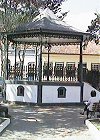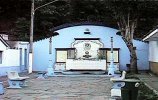
PARAIBUNA -- from the Tupi Guarani for river (or, perhaps, fish) of black waters - was founded on June 13, 1666 with the construction of a hut and a chapel in honor of St. Anthony.
On June 3, 1773 Manuel Antonio assumed the administration of the settlement Santo Antonio da Barra de Paraibuna. In 1812 the parish was established by the Prince Regent, and made a village, which was raised to a town in 1857.
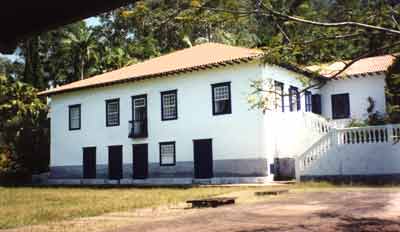
From 1830 to 1870 the area was known for its coffee plantations, and many farms, including the FAZENDA SÃO PEDRO, were created for that purpose.
With the decline of coffee plantations, farmers started to grow cotton. During this time Paraibuna began its financial decline.
A fresh impetus came to the county with the initiation of dairy-cattle breeding since 1922. Other economic progress derived from the construction of the President Dutra Freeway (Rio de Janeiro to São Paulo) and the Tamoios Highway.
Construction of the Paraibuna-Paraitinga Dam in the 1960s brought new difficulties to the community: the inundation of prime acreage and the exodus of agricultural workers. Today the county invests in tourism in order to improve its economy.
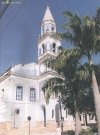
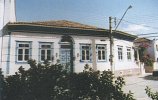
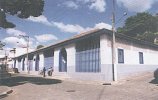
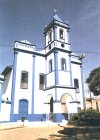
Paraibuna has many historical landmarks :
the bandstand in the town square, depicting promenading ladies
and story-telling gentlemen;
Colonial mansions from the era of the coffee boom;
the main church, constructed of "taipa" (crushed clay) in 1870;
the fountain, where horses and riders quenched their thirst when coming into town,
where the saying goes, whoever drinks from this water will stay here;
the market hall built in 1880 and still in use;
the Rosário church (1841) also built of "taipa", formerly for the use of slaves.
The portal of the cemetery entrance bears the inscription:
"
NOS QUE AQUI ESTAMOS POR VOS ESPERAMOS"
literally translated as "whe who are here, are waiting for you". These equivocal words can, however, also be understood as "Nós que aqui estamos, por Vós [, Senhor,] esperamos". meaning "We who are here, are waiting for You, [Lord]."
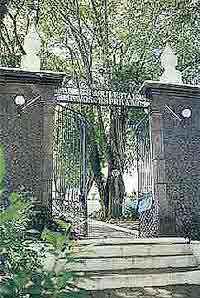
The county's main attraction is the artificial lake formed by a dam, with many recreational possibilities.
 PARAIBUNA -- from the Tupi Guarani for river (or, perhaps, fish) of black waters - was founded on June 13, 1666 with the construction of a hut and a chapel in honor of St. Anthony.
PARAIBUNA -- from the Tupi Guarani for river (or, perhaps, fish) of black waters - was founded on June 13, 1666 with the construction of a hut and a chapel in honor of St. Anthony.
 PARAIBUNA -- from the Tupi Guarani for river (or, perhaps, fish) of black waters - was founded on June 13, 1666 with the construction of a hut and a chapel in honor of St. Anthony.
PARAIBUNA -- from the Tupi Guarani for river (or, perhaps, fish) of black waters - was founded on June 13, 1666 with the construction of a hut and a chapel in honor of St. Anthony.
 From 1830 to 1870 the area was known for its coffee plantations, and many farms, including the FAZENDA SÃO PEDRO, were created for that purpose.
From 1830 to 1870 the area was known for its coffee plantations, and many farms, including the FAZENDA SÃO PEDRO, were created for that purpose.




